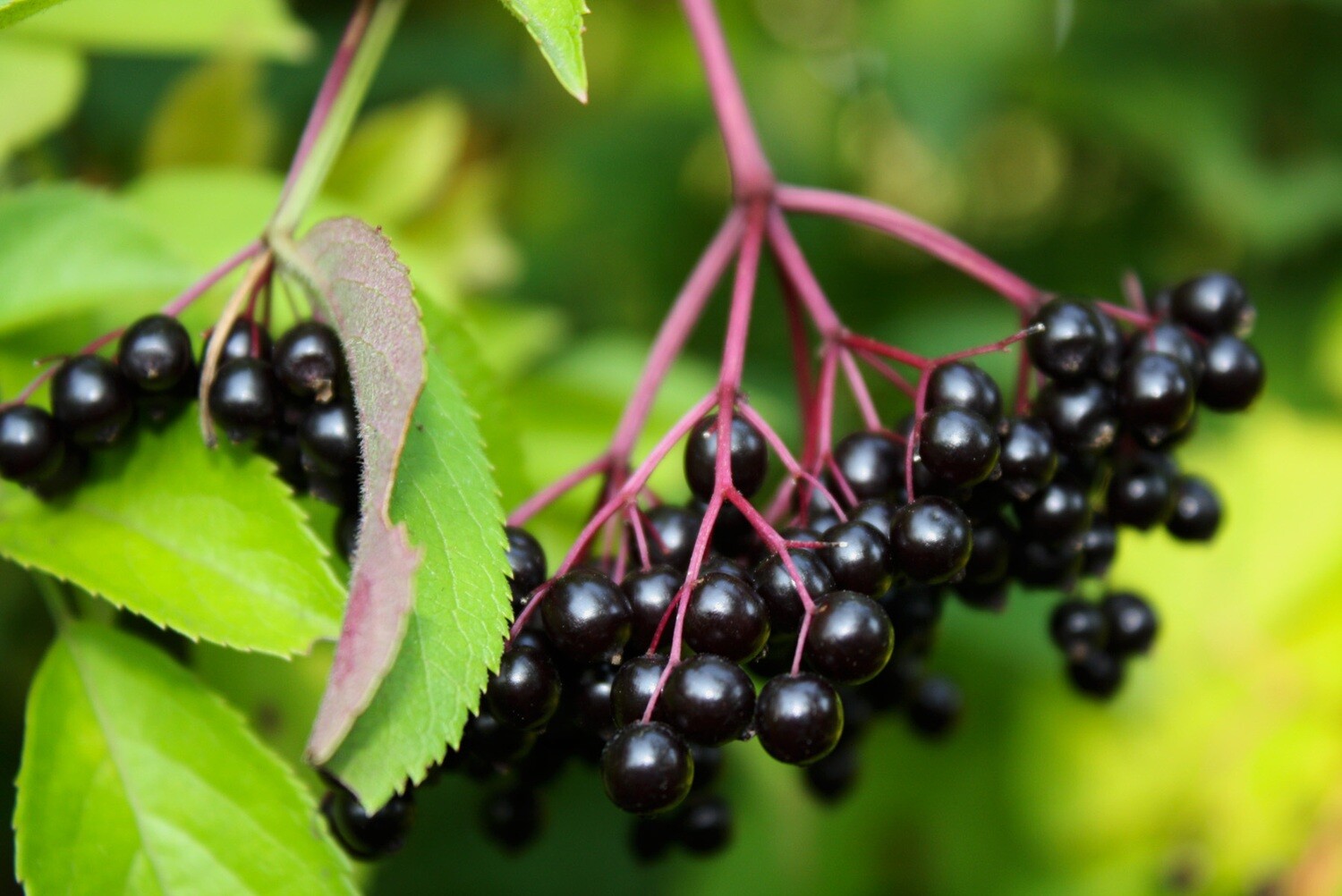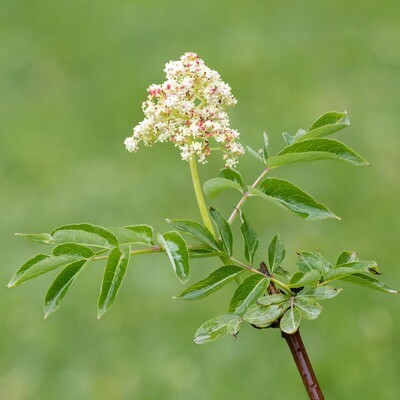Sambucus canadensis - Common Elderberry
A multitude of white flowers adorn the elderberry in the spring giving way to brilliant clusters of dark purple berries. Fruit can be used for jellies, pies, juice and wine. Berries and flowers are edible, but other parts of the plant are poisonous. Very adaptable but it does prefer moist to wet soil. Good for naturalization and roadside planting. Deer resistant. Important food source for birds, learn more.
Height : 5-15 feet Spread : 5-15 feet
Light : Full sun to part shade Water : Moist to wet
Soil : Sand, loam, clay Zone : 3-8
Leaves : Dark green in summer, insignificant yellow-green fall color
Stem : Yellowish-gray to gray-brown stems, insignificant smooth tan bark
Flower : Lightly scented showy flat-topped white flower clusters in June-July. Flowers quite profusely covering the shrub
Fruit : Purple-black berries in August-September produced in drooping clusters that will attract birds
Habit : Fast growing multi-stemmed shrub, broad and rounded crown with arching branches. Tends to sucker
Key Pollinators : Small sweat bees, small carpenter bees, mining bees
Pollinator Food Source: Nectar
Larval Host Plant : Grey hairstreak, morning cloak, pale tiger swallowtail


